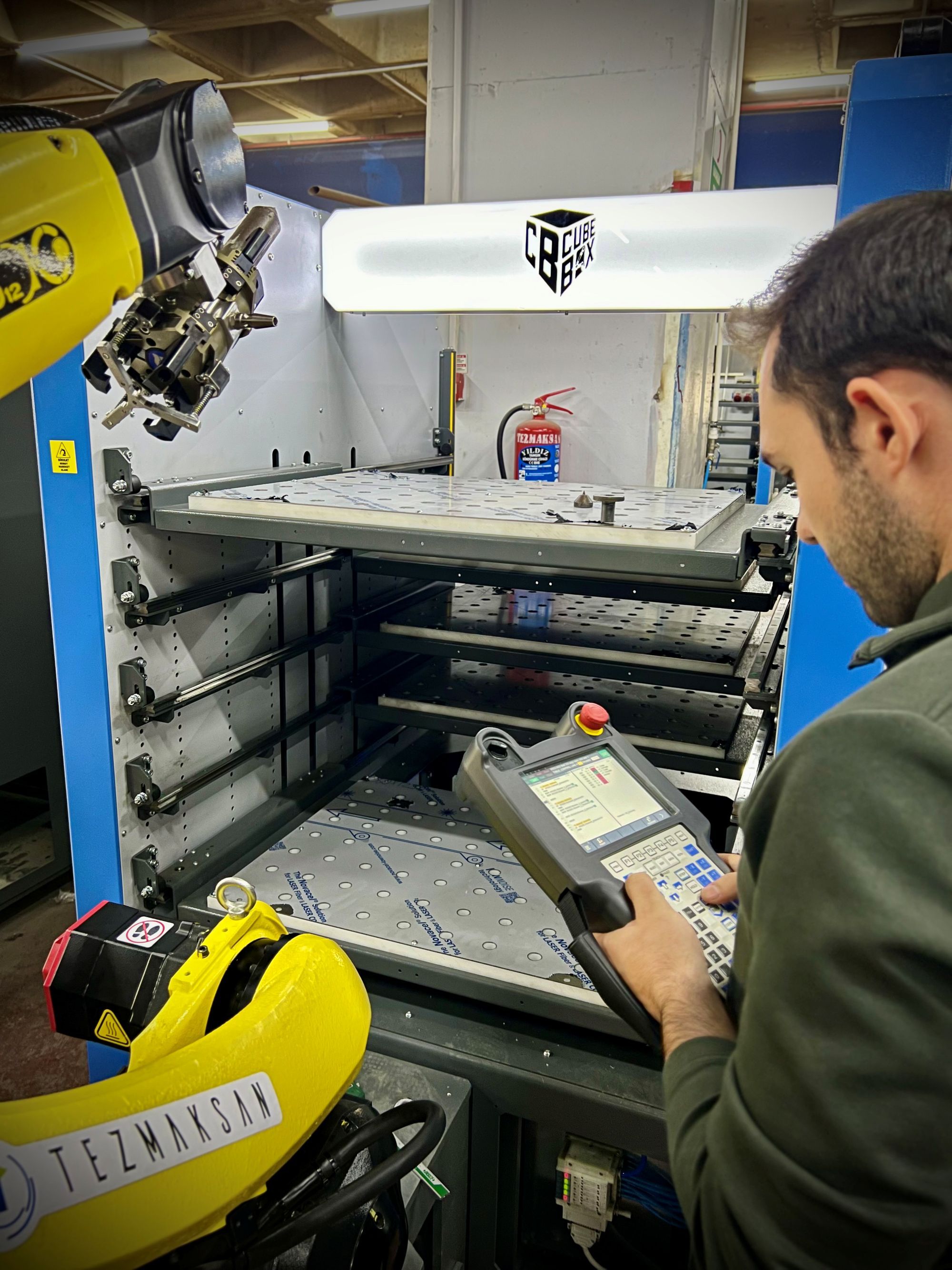The Rise of Digital Twins in Manufacturing

Originally developed by NASA, digital twin technology is now transforming manufacturing by improving efficiency and reducing downtime. Yet adoption in CNC environments faces obstacles such as integration challenges and high costs. Here, Hakan Aydogdu, CEO of CNC automation system manufacturer Tezmaksan Robot Technologies, explains how modular, scalable solutions like CubeBOX and ROBOCAM+ enable gradual integration with existing systems, allowing manufacturers to adopt digital twin capabilities without costly overhauls.
Digital twins trace their origins back to the space race, when NASA developed virtual models to replicate spacecraft systems in real time. In missions like Apollo 13, engineers used these simulations to diagnose issues, test responses, and guide life-saving decisions — marking a pivotal moment in the evolution of digital modelling.
Fast-forward to today, and digital twins offer a pathway to improved efficiency, reduced downtime, and greater responsiveness for manufacturers. Indeed, a study conducted by Deloitte revealed that predictive maintenance can boost equipment uptime by 10–20 percent and lower total maintenance expenses by 5–10 percent. Yet despite their promise, the road to adoption is often less straightforward than it seems.
For manufacturers, particularly small to mid-sized enterprises (SMEs), adopting digital twin technologies poses several structural challenges. Integrating real-time data from disparate equipment and control systems is a major hurdle, especially where legacy machinery lacks the digital interfaces required for monitoring and simulation. Retrofitting older equipment is possible, but often costly.
Beyond the technical barriers, there is a persistent shortage of personnel who possess both manufacturing expertise and proficiency in data analytics or industrial IoT. This skills gap not only slows implementation but also limits the value organizations can extract from early investments in digitalization. Cost, too, remains a factor, with some firms reluctant to commit resources without clear short-term returns.
Introducing Digital Twins Gradually
Despite these challenges, the broader trend toward digitalization is accelerating. McKinsey & Company projects the global digital twin market will exceed US$ 70 billion by 2027. Large manufacturers have led adoption through in-house development and integration. Indeed, Forbes recommends that businesses follow the examples set by Siemens and GE, which use digital twins for real-time manufacturing optimization and predictive maintenance in jet engines, respectively.
However, for SMEs, the path to adoption often looks different. Rather than large-scale system overhauls, many are turning to modular, scalable technologies that can be introduced to the shop floor gradually.
Strategies often begin with machine monitoring or simulation on a limited scale, which allows firms to test digital twin concepts without overhauling entire production lines. The use of cloud-based platforms and vendor-agnostic solutions is also growing, as manufacturers seek flexible options that can accommodate existing infrastructure.
Practical Applications in CNC Automation
Recent developments in CNC automation illustrate how digital twin capabilities are being adapted for use in traditional machining environments. A growing number of manufacturers are deploying modular robotic systems alongside data monitoring tools to support real-time decision-making and process optimization.
Among the solutions gaining traction are systems like Tezmaksan’s CubeBOX — a modular robot cell that is compatible with various CNC machines and control units.
In real-world applications, CubeBOX has enabled manufacturers to automate routine operations such as part loading and unloading, extending production into unmanned shifts and helping to reduce manual errors.
These systems are often integrated with Tezmaksan’s Kapasitematik platform, which monitors machine and operator performance to support more informed planning and operational oversight.
Another tool in use is ROBOCAM+, software developed by Tezmaksan that helps bridge the gap between digital design and physical production. The program converts 2D CAD files into 3D CAM instructions, allowing manufacturers to simulate machining operations before implementation. This virtual test environment reduces programming errors, speeds up deployment, and supports a more seamless integration of automation into daily workflows — an essential component of digital twin functionality.
Importantly, many of these solutions are designed to interface with older equipment. For facilities still reliant on legacy machinery, systems like CubeBOX offer plug-and-play compatibility, enabling incremental digital upgrades without requiring full equipment replacement. This ability to modernize in stages has proven particularly beneficial for SMEs seeking to remain competitive while managing cost constraints.
While the value proposition of digital twins is increasingly well understood, the reality of implementation remains shaped by practical constraints. For many manufacturers, particularly in CNC machining, a phased and pragmatic approach appears most viable — one that leverages existing equipment and focuses on modular, scalable tools.
Image Source: Tezmaksan Robot Technologies




 Facebook
Facebook.png) Twitter
Twitter Linkedin
Linkedin Subscribe
Subscribe